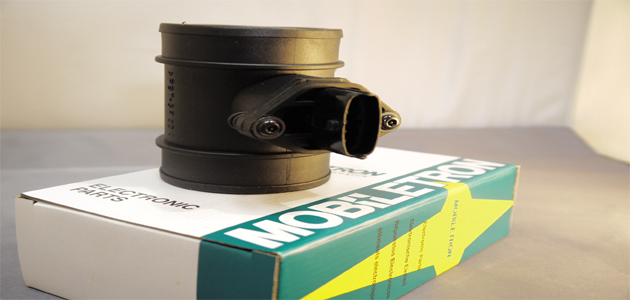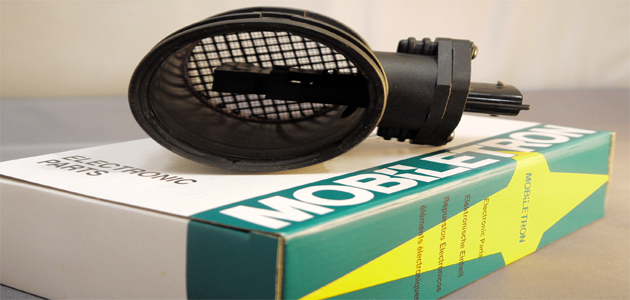

Function and operation
The main function of the Mass Air Flow (MAF) sensor is to measure the volume of air passing through it, and therefore into the combustion chamber of the engine. This measurement allows the ECU to perform adjustments which ensure that the engine is performing to an optimum level. The data from the MAF sensor is simply a voltage between 0v and 5.0v. This voltage varies depending on the volume of the air flowing through the sensor and is proportional to the air flow rate.
The MAF sensor works in conjunction with the Oxygen sensor to produce a closed loop control system. It provides a sensory indication to the volume of air flow entering the combustion chamber, and the Oxygen sensor allows the ECU to calculate the exact volume of air used in combustion. This makes the MAF an extremely important function in the engine management setup of a modern vehicle.
The main type of MAF sensor is a hot wire or film type. This sensor operates by heating a wire within the sensor housing. As the wire heats up, the electrical resistance increases, so causing the current flowing to decrease. As air flows over the sensor, this cools the wire, allowing more current to flow as the sensor resistance decreases due to the reduction in temperature. This will continue to happen as the air flow rate changes. More dense air will remove more heat from the wire and the ECU can always calculate the mass of air flowing through the MAF sensor.
Failure and symptoms
The number one cause for failure for this product is contamination which can be from dirt and oil. Contaminants on the filament will cause inaccuracies during sensory readings and over time will cause the MAF sensor to fail completely. Sometimes in automatic vehicles, a faulty MAF sensor can also lead to incorrect gear selection.

Basic testing
Check the condition of the vehicle wiring harness and if output voltage is correct. This can be done with a simple multimeter, whilst the vehicle is under idle conditions and by varying the RPM. On-board diagnostics and scan tools will read the fault code, if available, and can also be used to monitor the sensor readings. It should then be possible to observe a steady increase and decrease which is proportional to RPM change. Alternatively, an oscilloscope – a more accurate method – can be used if scan tools are not available or it is not possible to read the sensor output values.
Any non-standard or unsteady increases and decreases could mean a faulty MAF sensor and this should then be replaced.
Remember that these test methods can only check if the sensor is functioning or not.
Generally the key symptom of failure is poor drivability. In some instances, this may not generate a check engine light code. Typical symptoms of failure include:
- No start conditions
- Extended cranking times, especially when the engine is cold
- Rough idle conditions, including stalling and surging
- Hesitation under acceleration
- Poor driving behaviour and loss of power under maximum acceleration
- Reduced fuel economy









